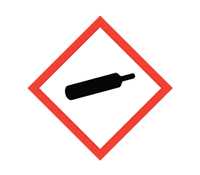What Do COSHH Symbols Represent?
- Dale Allen
- Nov 8, 2017
- 2 min read
Updated: Mar 1, 2019
When a workplace frequently uses chemicals, or creates substances that are hazardous to health through a work process then everyone on-site must immediately be able to know and recognise the COSHH symbols and their meanings.

These symbols are required to be placed on the packaging of hazardous substances.
COSHH symbols must be clearly visible and instantly convey the correct warning pertaining to the use, storage and transport of a substance.
Following the 2-year grace period of the June 2015 deadline for the changeover from CHIP Regulations, the CLP Regulation is now the standard.
All businesses should now be complaint with CLP, and with the latest Regulations came updated, internationally recognised symbols.
Some of the new international COSHH symbols are similar to the older symbols from CHIP. The most obvious change is the symbols are now black icons, on white and bordered with red. This is a big change from the dated orange and black symbols.
Three new classifications have also been introduced; Caution, Gases under pressure and Longer term health hazards.
Each symbol is also accompanied by either a 'danger' or 'warning' phrase to assist in alerting a person to the presence of a hazardous substance.
These are the latest COSHH symbols to be used for each substance of the correct class:

Exclamation mark - Used for classes:
Irritant
Dermal sensitizer,
Acute toxicity (harmful),
Narcotic effects,
Respiratory tract irritation.

Skull and crossbones - Used for classes:
Acute toxicity (severe)

Corrosion - Used for classes:
Corrosives.

Exploding bomb - Used for classes:
Explosives,
Organic peroxides,
Self reactives.

Gas cylinder - Used for classes:
Gases under pressure.

Environmental hazard - Used for classes:
Environmental toxicity.

Health hazard - Used for classes:
Carcinogen,
Reproductive toxicity,
Mutagenicity,
Respiratory sensitizer,
Target organ toxicity,
Aspiration toxicity.

Flame over circle - Used for classes:
Oxidisers.

Flame - Used for classes:
Flammables,
Pyrophorics,
Self-heating,
Emits flammable gas,
Organic peroxides,
Self reactives.
How well do your employees know the symbols they see every day?
It's easy to forget that many of the substances used in businesses on a daily basis are often very dangerous.
Because we use them every day we gloss over the dangers, we tell ourselves we know how to use them correctly and so there is no danger.

But when that inevitable accident happens..
Are your employees informed of the correct procedures?
It's difficult to say because current COSHH training is inadequate.
There is a major flaw.
Current COSHH training teaches the theoretical knowledge but stops there.
When a trainee who is deemed 'competent' actually creates what the company thinks is an adequate assessment, they are wrong.
They see the risks, but they cannot create a correct and compliant COSHH assessment.
Which means they cannot apply the correct control measures.
Are you worried you may be endangering your employees by neglecting their safety training?
While every person on a work site is responsible for the safety of every other person..
..It is your sole responsibility to ensure your employees are informed of the knowledge they need to safeguard each other, and your business.
Give them the training your business deserves.

.png)


Comments